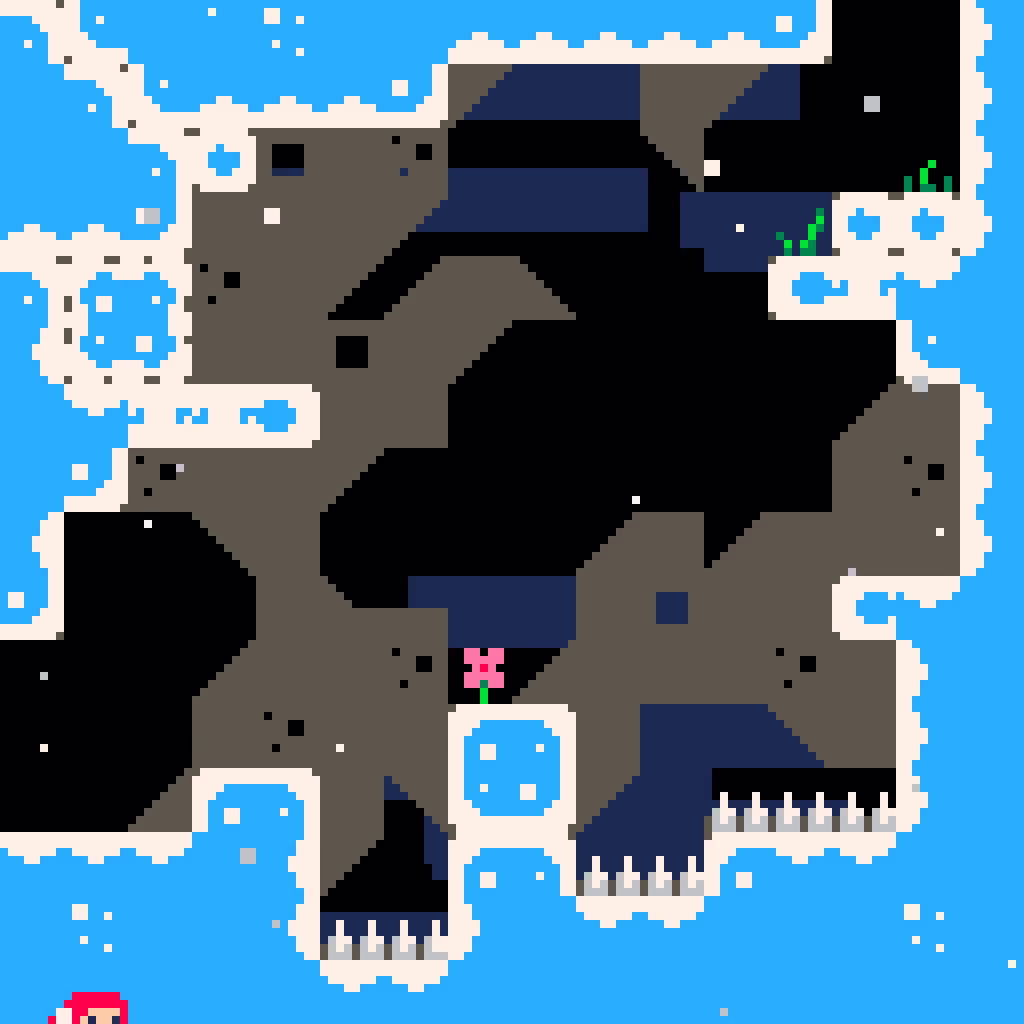This repository has been archived on 2023-11-28 . You can view files and clone it. You cannot open issues or pull requests or push a commit.
5242c7443c04cbb2015ffb74243b2b4c8f5d822a
Celeste-AI: A Celeste Classic DQL Agent
This is an attempt to create a deep Q-learning agent that automatically solves the first stage of Celeste Classic.
A gif of the result is below. This took 4000 episodes, which amounts to about 30 hours of training time.
Contents
./resources: contains files this script requires. Notably, we have an (old) version of PICO-8 that's known to work with this script, and a version of Celeste Classic with telementery and delays calledhackcel.p8.ffmpeg.sh: uses game screenshots to make real-time video of the agent's attempts. Read the script, it's pretty simple.plot.py: generates plots from model snapshots. These are placed inmodel_data/current/plots/.
Setup
Before you set up Celeste-AI, you need to prepare PICO-8. See resources/README.md
This is designed to work on Linux. You will need xdotool to send keypresses to the game.
cdinto this directory- Make and enter a venv
pip install -e .
Once you're set up, you can...
python celeste_ai/train.pyto train a modelpython plot.pyto make prediction plotspython test.pyto test a model
Before running, be aware of the following:
- Only one instance of PICO-8 can be running at a time. See
celeste.py. hackcel.p8captures a screenshot of every frame. PICO-8 will probably place these on your desktop. Since this repo contains a rather old version of PICO-8, there is no way to change where it places screenshots.train.pywill delete, move, and rename screenshots automatically during training, but you should tell it where your desktop is first.- When you start training, a
model_datadirectory will be created. It contains the following:model_archive: history of the model. Save interval is configured insidetrain.pyscreenshots: contains subdirectories. Each subdirectory contains the frames of one episode. Useffmpeg.shto turn these into a video.plots: generated byplot.py. Contains pretty plots.
Description
Languages
Lua
73.7%
Python
14.4%
TeX
11.2%
Shell
0.7%
